After nearly 15 years of brutal conflict, the multi-faceted Syrian Civil War now draws to a close. The war-torn country is now under the leadership of a transitional authority made up of a fragile tapestry of revolutionary factions that aims to mend the wounds of war left behind by its former dictator Bashar al Assad and his family’s 53 year long rule of the arab state. After a decade and a half of war, the reality of Syria is very grim with the country’s GDP having reduced to a mere 15% of its pre-conflict level. Nearly six million citizens live as refugees abroad, while another seven million remain internally displaced. Civil infrastructure lies in ruins, and the death toll is close to over half a million. Syria, long the beating heart of the Levant, stands scarred and hollowed, but not defeated. Amidst this devastation, the fall of Assad has sparked hope, as in the months since the rise of Ahmed Al Sharaa’s transitional government, hundreds of thousands have returned to their homeland, seeking to rebuild not only homes and businesses but a future.
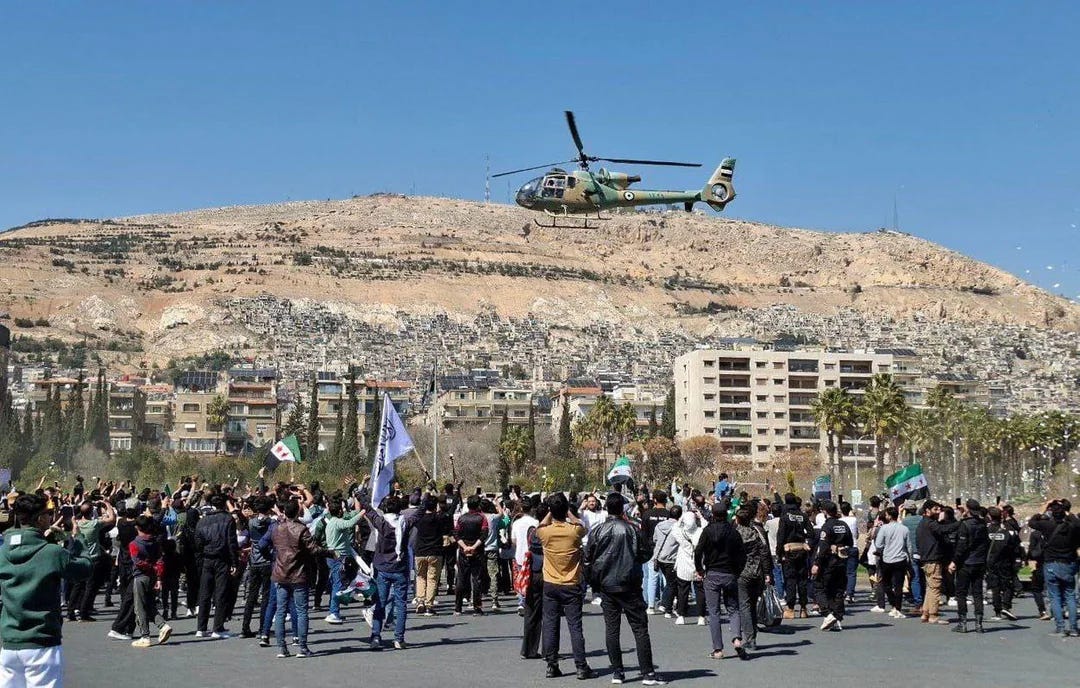
This essay does not aim to dwell on the politics of a complicated war nor assign blame in a deeply polarised conflict. Rather, it focuses on a critical component of national reconstruction: the resurrection of Syrian air power. The need for an air force is not just symbolic, but also strategic. A sovereign Syria must be able to defend its borders, secure its skies, conduct disaster relief, and deter future aggression.
The Fall of Assad and the Dissolution of the Ba’athist State
In the early hours of December 8, 2024, a bold 11 day offensive by a coalition of Syrian revolutionary factions encircled the ancient city of Damascus. What began as a localised offensive to break the uneasy stalemate since 2020 and capture key cities in the north of the country ultimately brought down the tyrannical regime that had ruled the Arab State since 1971. President Bashar al Assad had fled the country, with his key backers in Moscow and Tehran engaged in large scale conflicts of their own in Ukraine and the Holy Land, and ended the tragic civil war that had ravaged the country since 2011.

The collapse of the Assad government saw Syrian Army General Command announced that its personnel were no longer in service, many of whom had laid down their arms and abandoned their posts, fleeing to neighbouring states like Lebanon and Iraq. As power vacuums opened, neighbouring Israel grew concerned about instability along the Golan Heights that it occupied. In a preemptive move, the Israeli Defense Forces initiated Operation Arrow of Bashan, citing fears of weapons proliferation to Syrian revolutionaries and a cross-border insurgency by Assadist loyalists. Over the course of 48 hours, the IDF launched what it termed the most extensive air operation in its history with more than 480 strikes targetted across Syria. Official statements declared the aim was to use Israel’s dominant aerial force to neutralise strategic threats, including chemical weapons facilities, military infrastructure, and airfields. The result was catastrophic for Syrian military capability with nearly 70–80% of its strategic weapons systems destroyed. Its antiquated naval fleet, unchanged since the 1971 Yom Kippur War, sunk in its ports. With most airbases were either crippled or rendered unusable, command and control fractured and its harden aircraft shelters bombed out, the once-formidable Syrian Arab Air Force (SyAAF), already weakened by years of war was functionally erased in less than a week.
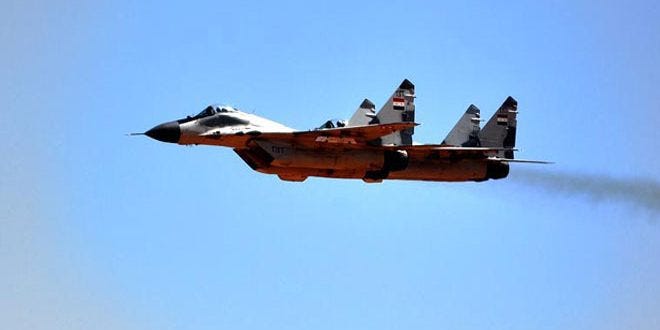
From an estimated pre-war inventory of 575 fixed-wing and 191 rotary-wing aircraft, from cold war era MiG-21s, MiG-23s, MiG-25s, somewhat newer MiG-29s and L-39 trainers, practically nothing remains that is worth keeping. The country’s Soviet designed air defence, once considered one of the most strongest in the region, was entirely obliterated. The task now lies on the shoulders of the reformed Syrian Transitional governemnt and its new Ministry of Defence to rebuilt Syria’s defences anew. With an economy in shambles and much of its infrastructure destroyed, this task is not going to be easy however, as Damascus must also focus on maintaining unity among its various former rebel factions.
A New Syrian Air Force: Why Air Power Still Matters?
There is no doubt about the role the Syrian Arab Air Force (SyAAF) played in the nation's long nightmare. The patriarch of the Assad dynasty, Hafez al-Assad, rose from its ranks and following his so-called Corrective Revolution in 1971, transformed the air force from an institution of national defence into a personal instrument of power. Under his rule, the SyAAF’s Intelligence Directorate, modelled after East Germany’s Stasi and nicknamed the “Silent Army” became one of the regime’s most brutal tools of repression. Its aircraft were not only used against foreign enemies but often turned inward bombing rebel held towns, surveilling dissent, and enforcing the will of the state with pitiless efficiency.
With the fall of the regime, this feared apparatus has been dismantled. The dissolution of the Assadist SyAAF, alongside the other security organs of the Ba’athist state, was necessary. Justice demands that those who used state air power to terrorise their own people be held to account. And yet, even amid this painful reckoning, Syria cannot afford to exist without an air force. In a powerful gesture during the anniversary of the Syrian Revolution and Liberation from the Assad regime, SyAAF helicopters soared once more over Damascus and Idlib. But this time, they carried no bombs, only blossoms. They showered the celebrating crowds with flowers and congratulatory notes. It was a striking inversion of memory: the same aircraft that once rained barrel bombs now scattered petals, marking a clear intent by the reformed Syrian government to reforge the image of the SyAAF in the hearts and minds of its people.

A state without control over its airspace is not sovereign. A government unable to muster sufficient Intelligence, Surveillance and Reconnaissance assets to monitor its lands, transports to deliver relief in an earthquake, or airlift wounded civilians from a border skirmish, is not functional. Surrounded by volatile neighbours as the borders with Iraq and Lebanon remain porous, internal threats from Kurdish and Druze separatists, Daesh remnants, Iranian-backed militias, and possible Assadist revanchists, the need for a capable, accountable, and new Syrian air force is not a luxury. With Israel reserving a carte blanche to strike as they see fit, Damascus might not seek parity with the IDF’s aerial wing but would want enough capability to discourage unchallenged operations. Therefore while not seeking escalation, Syria must regain control over its own skies and a reconstituted SyAAF signals more than readiness, it brings sovereignty for Damascus. No government seeking legitimacy can subcontract its national airspace to foreign powers indefinitely. Air power, even at modest scale, offers both deterrence and dignity.
Friends in a Fractured World: Who can step in to help?
Rebuilding a modern air force from scratch requires not only funding but friends. Syria’s future partners must be chosen for political compatibility, affordability, and long-term sustainability. With Türkiye being the Syrian government’s strongest ally today, it could be interesting to see whether they would be the first to offer equipment to begin rearming the new SyAAF, perhaps with their famous Bayraktar TB2s as a start. Should they secure the necessary reexport permissions from the United states, it wouldn’t be hard to see ex-Turkish/Saudi/Bahraini F-5E/F Tiger IIs upgraded by Turkish aerospace firms and gifted to Damascus to form the backbone of the reformed Syrian Air Force
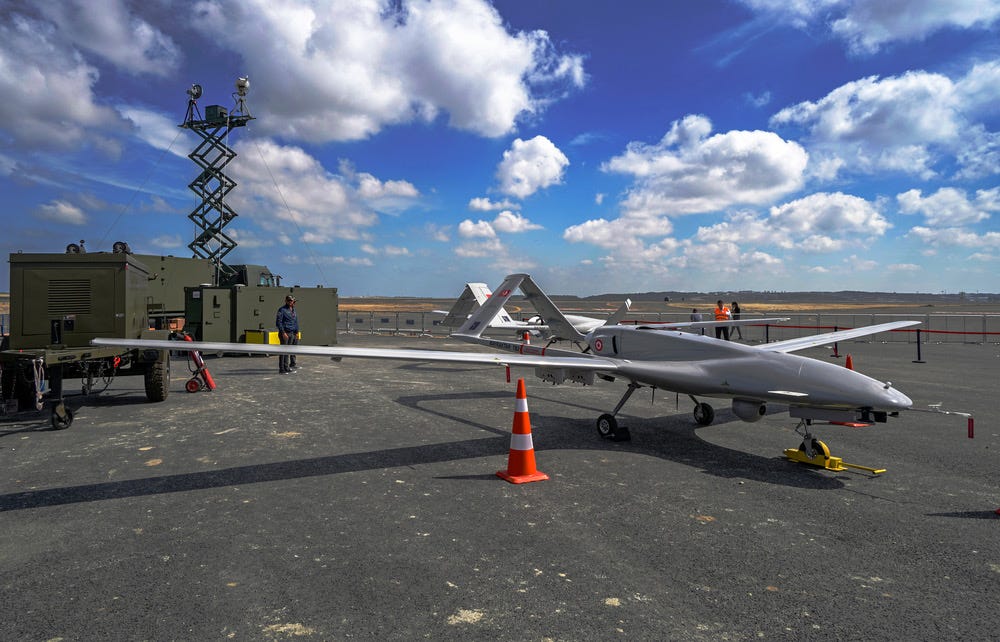
With Russia still licking its wounds from Ukraine, their export power is diminished, but cheap surplus Sukhoi Su-30s, Yakovlev Yak-130s and UAVs could be on offer. Considering much of the inventory of the Assadist air force relied heavily on soviet/russian technology, as well as an integrated maintenance chain already in place, this could be the easiest to implement, however this option carries with it a lot of political baggage since Putin was Assad’s strongest ally, though Moscow might wish to mend relations with the new government in order to retain access to its ports in the Mediterranean.
Damascus may also look towards the west as it wishes to realign itself and its interests as it opens itself up to the world and forges its own path ahead. To this end, Europe, now looking to lift sanctions could see a chance to restore its influence in the former French colonial mandate, with Paris potentially ending the arms embargo by offering surplus Mirage 2000s and Mirage F1s from Qatari, Emirati or Moroccan stocks, or out of French storage from where these relatively recently decommissioned airframes can be donated to the SyAAF as they did to Ukraine.
Perhaps unlikely at the moment, but there is a non zero possibility of China offering low-cost, combat tested alternatives to western jets like the JF-17 (in conjunction with Pakistan), the J-10CE and the Wing Loong II UCAVs, currently being procured by regional partners like Egypt and Pakistan, with the aim of using Syria to gain a strategic foothold in the Eastern Mediterranean.

Building a New Syrian Air Force
Lessons from History
Compared to the legacy Assadist Air Force, a new SyAAF must be modular, asymmetric and survivable, to make best use of its modest size and the strategic depth of the Syrian desert. There is a lot of lessons to learn of nations rebuilding their airforces from scratch, most notable is Syria’s neighbour Iraq. After it was wiped out in the American Invasion in 2003, the Iraqi airforce rebuilt itself with NATO support, starting out by first slowly phasing out legacy French and Soviet jets that had escaped to Iran at the onset of the invasion and acquiring second hand stocks of helicopters from Russia and jet trainers from the Czech republic before moving on to freshly built F-16s from the US. However, the IQAF has been plagued with maintenance and training bottlenecks, rendering some of its F-16s inoperable, forcing Baghdad on the look for cheaper alternatives.
Syria must avoid these pitfalls, with centralised command, standardised platforms, a robust training pipeline, and defensible procurement strategies being non-negotiable. What remains post Israel’s Op Arrow of Bashan is a handful of MiG-21s/23s, more or less museum pieces now, that are in flyable condition. Perhaps the only usable assets in the Syrian inventory today are the L-39 Albatros jet trainers and an assortment of soviet helicopters, from around twelve Mi-17 utility helicopters to around five SA342 Gazelle light attack helicopters and an equal number of Mi-25 gunships. Interestingly, open source outlets have witnessed a couple of Mi-14 and Ka-28 helicopters that survived the Israeli onslaught, and provide a rare opportunity to secure the Syrian coastline and provide capability for search and rescue until the formation of a new Syrian Navy (perhaps a topic for a future article).
What could make up a reformed SyAAF?
What would an Operational Reconstitution Plan of the Syrian Arab Air Force for a transitional period from let’s say 2025-2028 look like? After restoring the L-39, Mi-17, Mi-25 and Gazelle fleets, the SyAAF could look at the acquisitiion of affordable, surplus, and politically viable foreign fighters like the Mirage 2000, Mirage F1 and F-5 Tiger II.
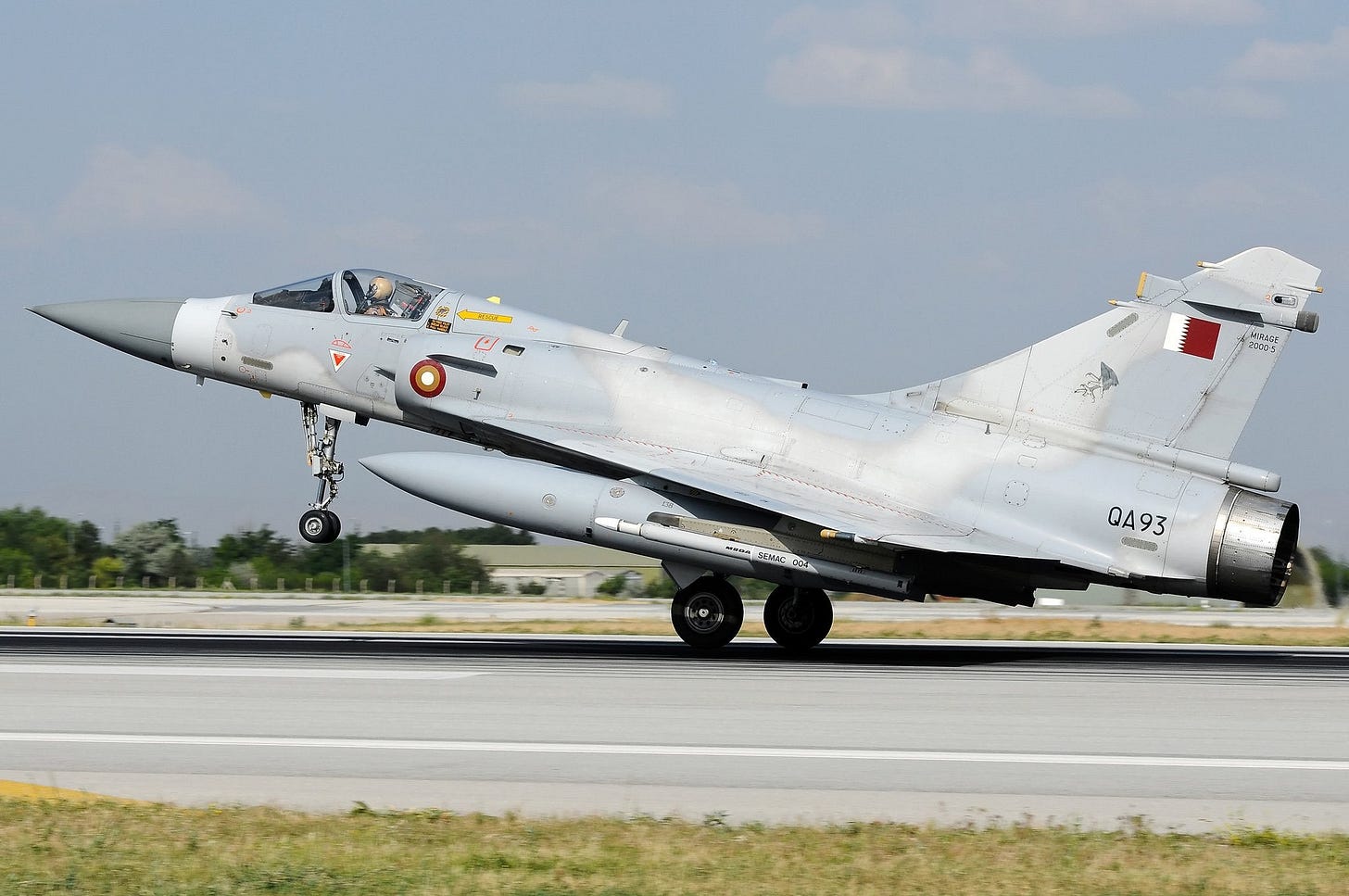
The Mirage 2000 from ex-Qatari and Emirati fleets, many with upgraded avionics and low flight hours, could replace Soviet-era MiGs with speed and grace. They are reliable, interoperable, and politically neutral in the regional theatre. Meanwhile, a promising surplus of F-5E/F Tiger IIs recently retired from Saudi Arabia and Türkiye could offer two key advantages: pilot retraining capacity and light strike capability, if permitted by US export restrictions. Paired with existing L-39s, they would bridge the gap between training and frontline service, until the SyAAF can bring in either the Hurjet or Yak-130 to become their future jet trainer once the economy stabilises to permit such a purchase. Should negotiations with the United States for the export of F-5s fall though, perhaps a squadron of Mirage F1s from Morocco or France could play the intended role. Negotiations with France could also lead to the acquisition of around four CN-235s to supplement the 2-3 restored Il-76s of the legacy fleet to provide tactical airlift capability to the SyAAF. Lastly, the Bayraktar TB2 could form the new backbone of the SyAAF’s ISR and precision strike capability. A fleet of 12, if procured, will give the Damascus a digital eye in the sky, reducing risk to pilots and aircraft in contested zones.
One main topic one hasn’t touched upon is air defence, whose network that once ringed Damascus with Russian-made S-200s, Pantsir-S1s, and Tor-M1s now lying in scorched ruin, dismantled in minutes by the Israeli aerial onslaught of December 8, 2024. What remains of Syria’s sky shield is little more than a patchwork of shoulder-fired MANPADS and ageing anti-aircraft guns, effective perhaps against rogue drones, but impotent before modern airpower. Into this vacuum steps Türkiye, offering to deploy elements of its “Steel Dome” layered missile defence system, a hybrid of radar nets, low-to-high altitude interceptors, and electronic warfare suites, not merely to protect Syrian airspace, but to symbolically stake its influence in shaping the new order. For a fledgling state, unable to yet defend its own airspace, such foreign shields may be a necessary crutch, though one not without geopolitical strings.
The reconstitution of the SyAAF must be approached as a systems challenge, not merely an acquisition list. Replacing aircraft is only the first step and airframes are only one pillar; without trained pilots, skilled technicians, robust maintenance infrastructure, and sustainable funding, even the most advanced aircraft become grounded relics. The new SyAAF must be reborn as an integrated, modern force, a machine of men, minds, and doctrine and not a patchwork of surplus metal. That means revitalising pilot training, initially relying upon former personnel, gradually expanding through partnerships with regional allies, rebuilding technical academies for maintenance crews, and focusing on standardised fleets to simplify logistics. Airbases will need to be reconstructed, not only with fresh tarmac and hardened shelters, but with secure command networks and depot-level repair capabilities. Financial sustainability must guide every decision, while allies like Qatar and Saudi Arabia may shoulder the burden today, a strong Syrian economy will be needed to support multirole platforms, phased acquisitions, and defence partnerships to prevent the new fleet from becoming a fiscal albatross. Syria must look beyond the mere possession of jets and invest in the people, systems, and infrastructure that keep them flying. This is not just a return to the skies, it’s a generational commitment to sovereign airpower.
Conclusion: The Levant Watches the Skies
The resurrection of the Syrian Air Force is not a call to arms, nor a challenge hurled across borders. It is not meant to stir old ghosts or redraw lines in the sand. Rather, it is a reclamation of sovereignty of the Syrian sky after decades of tyranny, civil war, and foreign bombardment. It is about equipping a new generation of Syrian pilots, engineers, and airmen not with vengeance, but with vision.
Still, the region will watch warily. In Baghdad and Erbil, there may be cautious welcome, for a Syria that can defend itself may also stand with Iraq in resisting foreign overreach and jihadi resurgence. In Beirut, whispers will rise from every faction, with some fearing a resurgence of Syrian power, others quietly hoping for a counterbalance to Israeli overflights. In Amman, the Hashemite Kingdom will weigh its own air doctrine against a neighbour once again airborne. Even in Tel Aviv, there may be quiet recalibration, not out of fear, but out of the understanding that a rebalanced Syria may alter familiar dynamics. For decades, Israeli warplanes crossed into Syrian airspace with impunity and little fear of reprisal. A reconstituted Syrian air arm, even limited in size, introduces uncertainty. But this isn’t about sabre-rattling.
History is not kind to nations that surrender their airspace. If Syria is to be sovereign, it must also be secure. And in the quiet hum of Mi-17s and the afterburner roar of repurposed Mirages, the first notes of that new national anthem may yet be heard. The SyAAF would be a shield for the nation, a training ground for rebirth, and a declaration that Syria flies again, not as a relic of Cold War strategy, but as a sovereign air arm with eyes on the future.




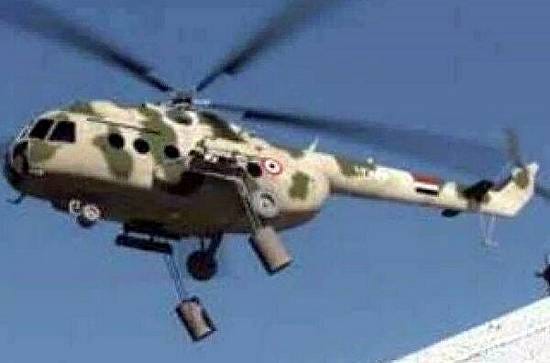


This was gripping from start to finish. You painted the atmosphere with such tension and grace—I felt like I was right there.